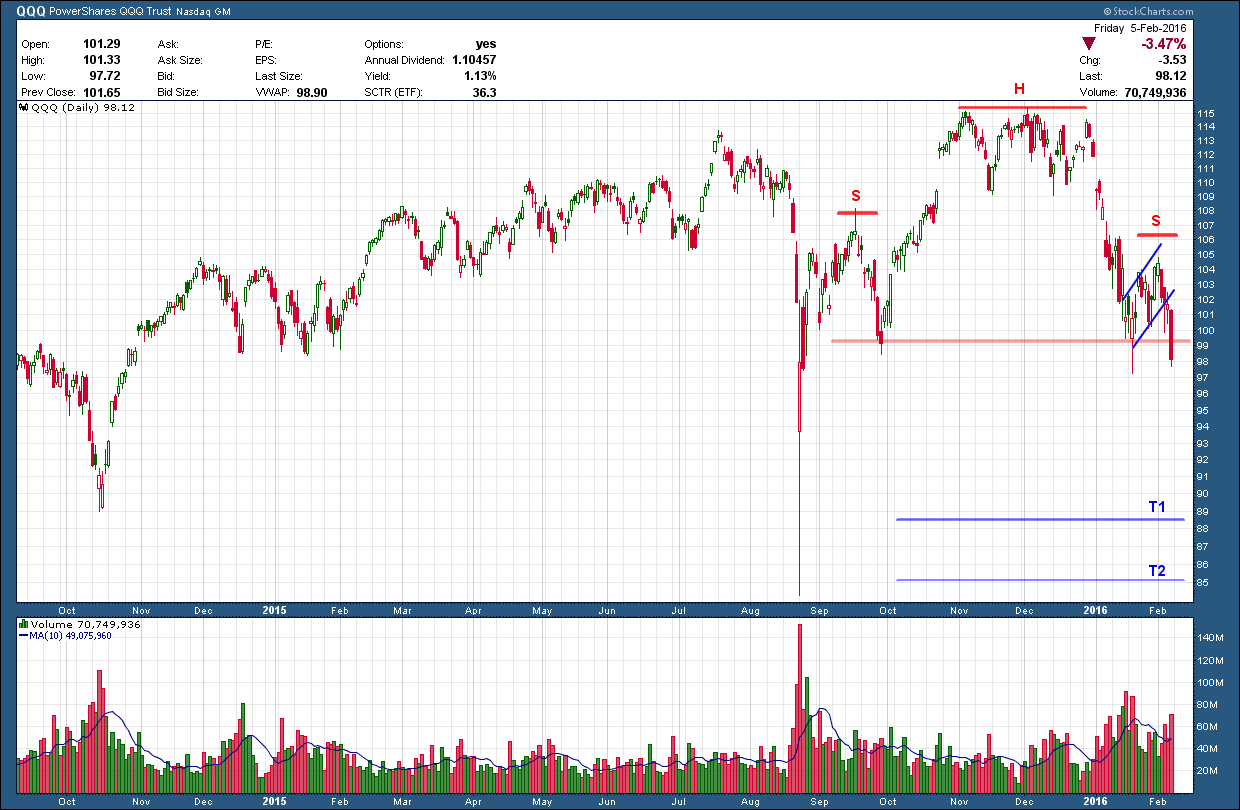Those that have owned Disney stock (DIS) have had a wonderful ride from the 2011 lows as it has risen more than 330%, peaking in July of last year. Since then, it has formed a double top and is currently sitting right on a major support level. The (red) 200 day moving average has had the chance to flatten and just recently begun to curl downward which is indicative of a weakening stock.
I am writing this post on Tuesday while the market is open (but won’t post until later) because Disney announces earnings after the market’s close today. If the market does not like their report, because of the current weakness in the stock, I believe it will be the precipitant for the double top pattern to play out to the downside. If this were to happen, the projected target is around the $60 level, some 30% from where we are today. A positive report would likely push the stock back up higher likely propelling it to prior highs near the $120 level. If it makes it to that $120 level, major overhead supply sits there patiently waiting likely putting a continuation of that rise on hold.
One of the intended take-aways from this post is that charts provide a framework for risk management and not a prediction of the future. News will always trump the charts so current Disney stock holders would do well to have a plan based upon market reaction to today’s earnings new, whichever way it turns out. Smart investors should not predict what will happen but rather react to what the market gives. Good risk management is what keeps investors in the game and able to come back to fight another day.







